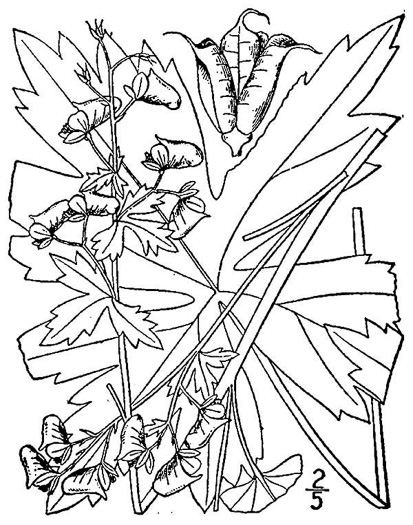Spermatophytes (seed plants): Angiosperms (flowering plants): Eudicots: Ranunculales
WEAKLEY'S FLORA OF THE SOUTHEASTERN US (4/24/22):
Aconitum reclinatum
FAMILY
Ranunculaceae
Go to FSUS key
Dig deeper at SERNEC, a consortium of southeastern herbaria.
Learn more about Trailing Wolfsbane from the Vascular Plants of North Carolina.
SYNONYMOUS WITH
PLANTS NATIONAL DATABASE:
Aconitum reclinatum
FAMILY
Ranunculaceae
SYNONYMOUS WITH Flora of North America
Aconitum reclinatum
SYNONYMOUS WITH VASCULAR FLORA OF THE CAROLINAS (Radford, Ahles, & Bell, 1968) 076-04-002:
Aconitum reclinatum FAMILY Ranunculaceae
SYNONYMOUS WITH Manual of the Southeastern Flora (Small, 1933, 1938)
Aconitum reclinatum
COMMON NAME:
Trailing Wolfsbane, White Monkshood, White Aconite
To see larger pictures, click or hover over the thumbnails.
WEAKLEY'S FLORA OF THE SOUTHEASTERN US (4/24/22):
Aconitum reclinatum
FAMILY
Ranunculaceae
SYNONYMOUS WITH
PLANTS NATIONAL DATABASE:
Aconitum reclinatum
FAMILY
Ranunculaceae
SYNONYMOUS WITH
Flora of North America
Aconitum reclinatum
SYNONYMOUS WITH
VASCULAR FLORA OF THE CAROLINAS (Radford, Ahles, & Bell, 1968) 076-04-002:
Aconitum reclinatum
FAMILY
Ranunculaceae
SYNONYMOUS WITH
Manual of the Southeastern Flora (Small, 1933, 1938)
Aconitum reclinatum
If a search such as "Carex leptalea var. leptalea" doesn't deliver the results you want, try "Carex leptalea".
Or, to minimize chances of a misspelling, try just "Carex le".
Less is more: If "pencil flower" doesn't deliver the results you want, try "pencil".


